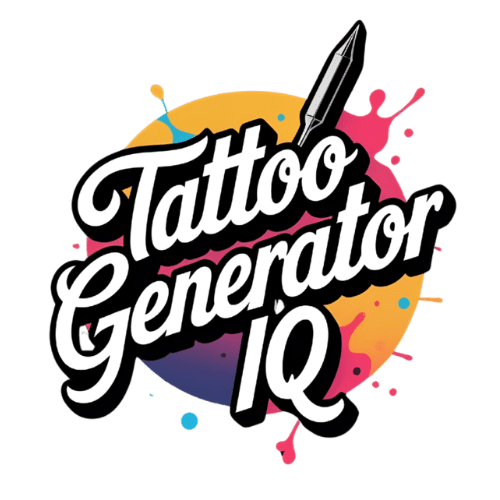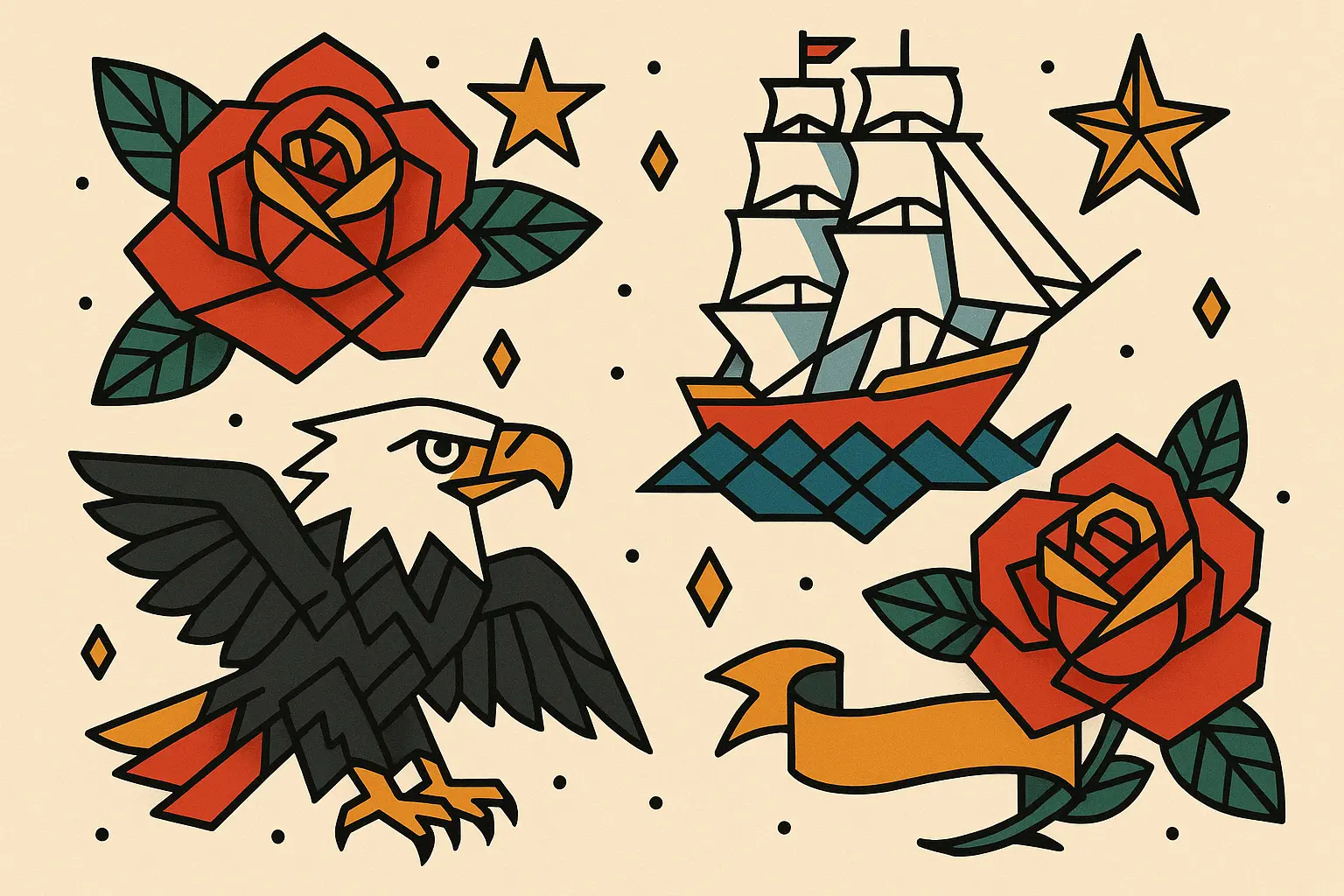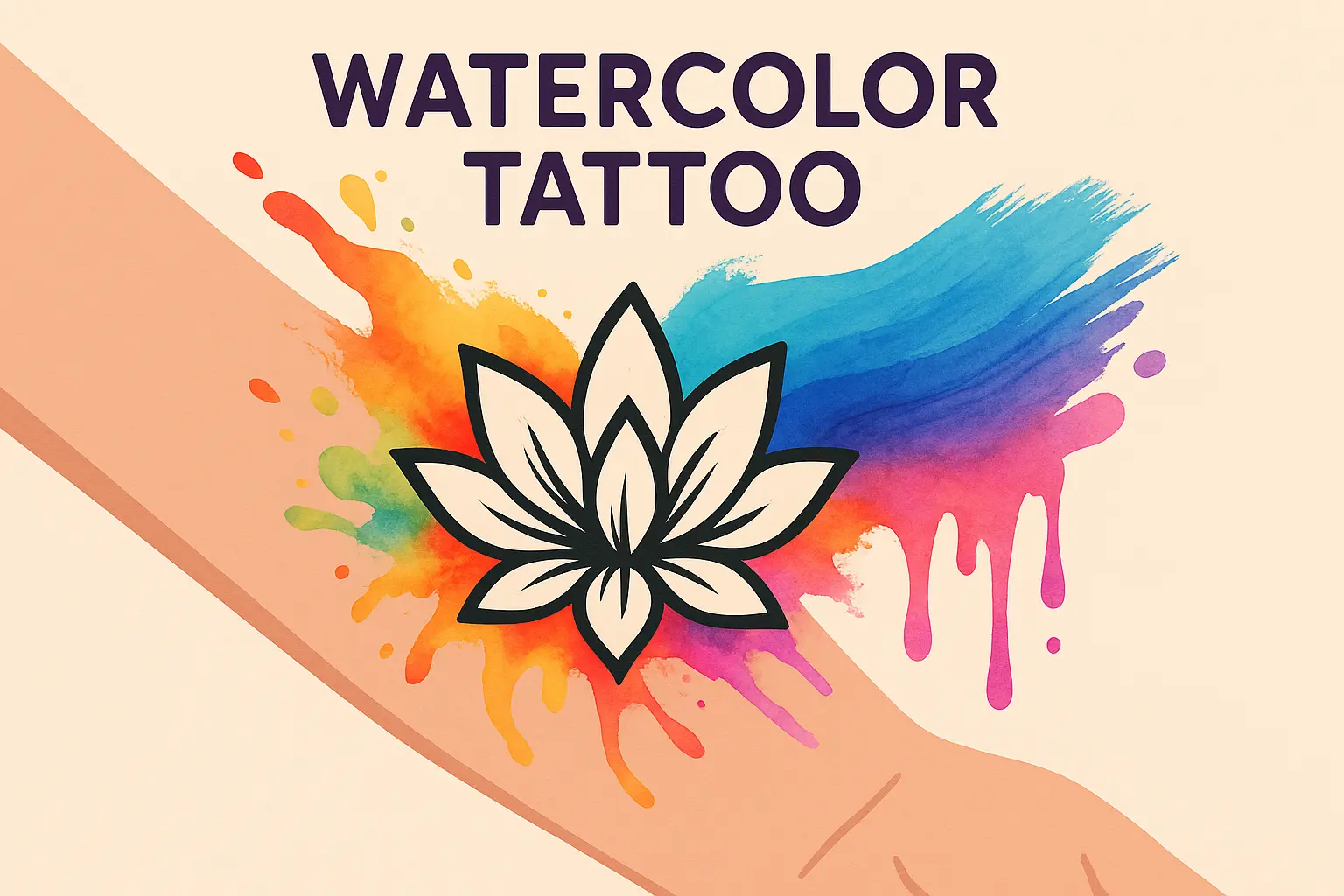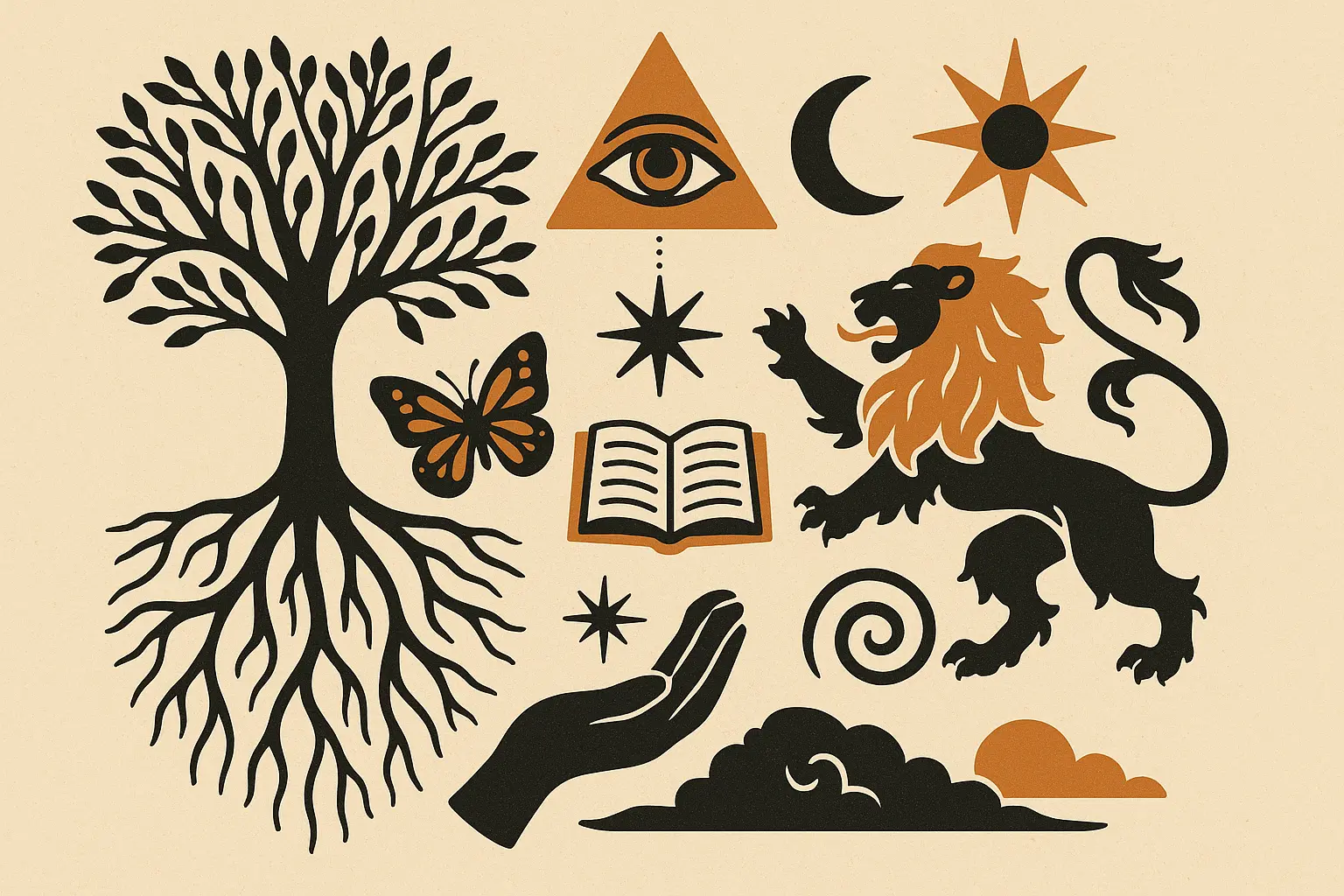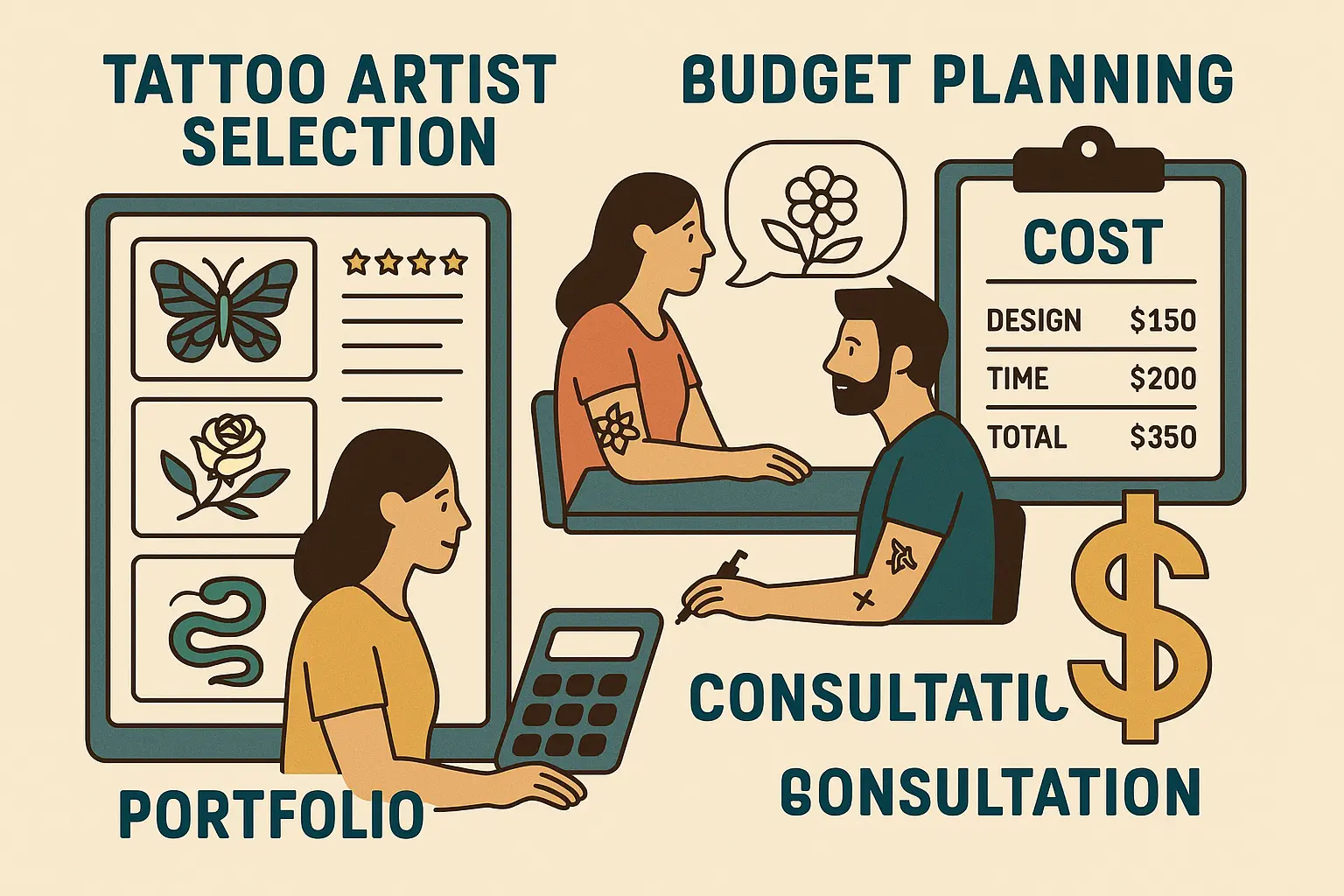25 Custom Tattoo Designs That Will Transform Your Body Art Vision
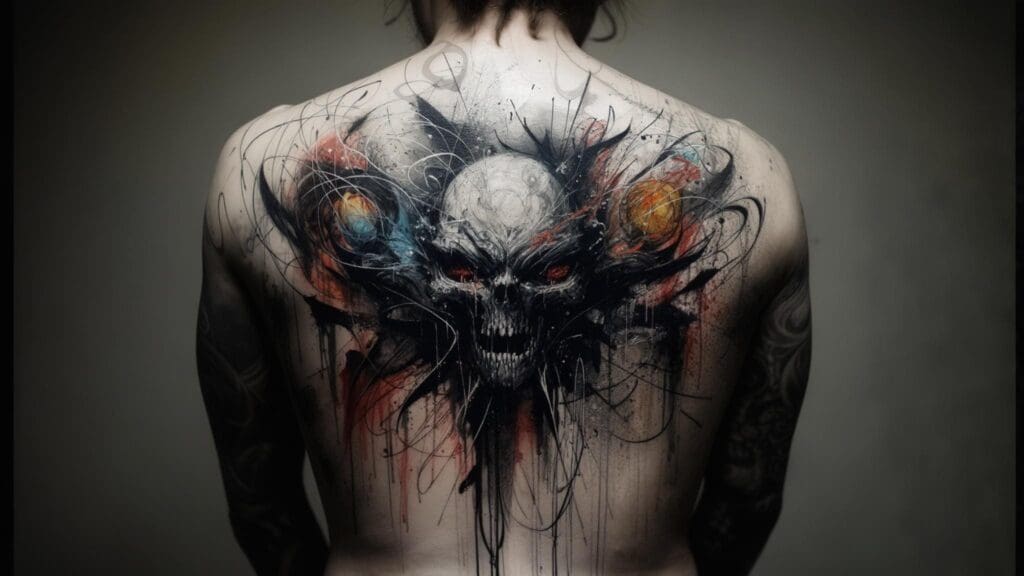
Getting a tattoo used to mean flipping through flash sheets on the parlor wall. Now? Most people are designing their ink digitally before they even step foot in a shop. It’s pretty wild how much things have changed – about 76% of tattoo enthusiasts are using digital tools to visualize their designs before getting inked.
I’ve spent years exploring the world of custom tattoo design, and honestly? The options available today will blow your mind. But here’s the thing – with all these choices comes the need to make smart decisions. You don’t want to end up with something you’ll regret when you’re 50.
This guide breaks down 25 distinct custom tattoo designs across six major categories. I’ll give you the real talk on each option’s personal meaning potential, where to put it, how it’ll age, and whether your boss will have a heart attack if they see it. From minimalist fine line work to cutting-edge augmented reality integration, you’ll learn how to navigate this complex world while making choices that actually make sense for your life.
Table of Contents
-
Essential Considerations for Custom Tattoo Design
-
Minimalist and Fine Line Designs
-
Traditional and Neo-Traditional Styles
-
Realistic and Portrait Work
-
Geometric and Abstract Designs
-
Symbolic and Spiritual Themes
-
Contemporary and Innovative Approaches
-
How to Choose the Right Design Category for You
-
Working with Artists and Budget Planning
-
Final Thoughts
TL;DR
-
If it doesn’t mean something to you personally, you’ll probably regret it later
-
Where you put your tattoo affects everything – pain, visibility, and how it ages
-
Bold, simple designs age like fine wine; intricate details can turn into blurry messes
-
Don’t pick your artist because they’re cheap – this is going on your body forever
-
Budget for the whole process, not just the tattoo session itself
-
Minimalist designs are your safest bet for professional flexibility
-
Traditional styles have stood the test of time for a reason
-
Realistic work looks amazing but needs serious upkeep
-
Contemporary stuff is cool but might not age well
-
Most people now use digital tools to preview their designs before committing
Essential Considerations for Custom Tattoo Design
Look, before we dive into all the pretty pictures, you need to get real about six things that’ll make or break your tattoo experience. I’ve seen too many people skip this part and end up with regrets.
First up: personal meaning. If it doesn’t mean something to you, you’re probably going to hate it in six months. I don’t care how cool it looked on Pinterest.
Placement strategy isn’t just about looking good – it’s about pain levels, professional implications, and how your tattoo will age. That cute little ankle piece? It’s going to hurt way more than you think.
Style selection should match your personality, but also consider how different approaches age over time. Size and complexity affect everything from session length to your bank account.
Artist selection is crucial – don’t just pick someone because they’re close to your house or cheap. And budget planning? This isn’t just about the tattoo session. Factor in consultations, design time, aftercare, and potential touch-ups.
Personal Meaning and Connection
Here’s the thing about tattoos – if it doesn’t mean something to you, you’re probably going to regret it. I’ve seen too many people get something because it looked cool on social media, only to hate it six months later.
Your custom tattoo should tell YOUR story. Think about what values you want to carry with you, what memories deserve honoring, or what personal transformation you want to commemorate. The best tattoos transcend trends because they’re rooted in something real and personal to you.
Maybe you want a daily reminder of something important, or maybe you prefer more private placement for personal reflection. Some people choose designs representing their journey through tough times, while others celebrate relationships, achievements, or spiritual beliefs. Whatever it is, make sure it’s genuinely yours.
Placement Strategy and Visibility
Where you put your tattoo changes everything. Let’s be honest about professional environments – some industries embrace body art, others will judge you for it. You might love tattoos, but if you’re climbing the corporate ladder, visible ink could complicate things.
Understanding the pain level tattoo chart: the science behind why some spots hurt more than others can save you from making a painful mistake, especially when considering sensitive areas like the ribcage or ankle.
|
Body Area |
Pain Level (1-10) |
Professional Visibility |
Aging Considerations |
|---|---|---|---|
|
Inner Forearm |
4 |
High |
Good longevity, minimal stretching |
|
Behind Ear |
7 |
Low-Medium |
Excellent for small designs |
|
Ribcage |
8 |
Low |
May distort with weight changes |
|
Shoulder Blade |
5 |
Low |
Excellent canvas, ages well |
|
Ankle |
6 |
Medium |
Good for small designs |
|
Upper Back |
4 |
Low |
Large canvas, excellent aging |
Everyone’s tough until they’re getting tattooed on their ribs. I don’t care how many piercings you have – some spots are just brutal. Bony areas, thin skin, and nerve-heavy zones will test your pain tolerance. Plus, areas that stretch a lot or get tons of sun exposure will affect how your tattoo ages.
Style and Artistic Approach
Different tattoo styles age completely differently. Bold, simple designs with strong lines stay sharp for decades, while intricate, detailed pieces with fine lines can turn into blurry messes over time. Traditional American and Japanese styles have proven longevity because they were designed specifically for skin.
Your style should complement any existing tattoos while reflecting who you are. Are you drawn to realistic representations, abstract interpretations, or symbolic approaches? Think about what speaks to you personally, not just what’s trending on Instagram.
Size and Complexity Considerations
Bigger tattoos offer more detail and visual impact, but they also mean longer sessions, higher costs, and extended healing time. Complex designs with multiple elements, intricate shading, or color work usually need several sessions to get right.
Check out small tattoo pricing revealed: how much do small tattoos cost & why to understand the cost implications of different size choices before you commit.
Your pain tolerance, available time for appointments, and budget all factor into these decisions. Don’t rush a complex piece to save time or money – you’ll be living with compromised quality forever.
Minimalist and Fine Line Designs
Minimalist tattoos are like the little black dress of body art – they work everywhere, age beautifully, and never go out of style. These designs focus on the essentials without unnecessary decoration, making them perfect if you’re new to tattoos or need workplace discretion.
Single-line portraits capture emotional significance through continuous flowing lines, while geometric nature combinations create striking contrasts between organic and structured forms. Micro script typography delivers powerful messages through strategically placed meaningful words, and constellation mapping transforms significant dates into personalized celestial artwork.
1. Single-Line Portrait Silhouettes
These elegant designs capture loved ones using continuous, unbroken lines that flow seamlessly from start to finish. The minimalist approach creates timeless appeal while maintaining deep emotional significance through recognizable profiles of family members, beloved pets, or inspirational figures.
The magic happens when a skilled artist distills complex facial features into their most essential elements. They can capture your grandmother’s distinctive nose, your child’s profile, or your pet’s characteristic ear shape using nothing but a single flowing line that never breaks.
Many people find inspiration through 25 simple tattoo ideas for beginner-friendly designs with lasting impact that emphasize clean lines and meaningful simplicity.
Modern ai tattoo generator tools can help you visualize how single-line portraits might look on different body placements, letting you experiment with proportions and positioning before meeting with your artist.
Sarah needed to honor her late father but worked in corporate law where visible tattoos were frowned upon. She chose a single-line profile of her dad’s distinctive silhouette on her inner forearm – easily covered by long sleeves during court appearances but visible when she wanted to remember him. The continuous line captured his strong jawline and gentle smile perfectly. Five years later, it still looks crisp and carries the same emotional punch, with zero touch-ups needed.
2. Geometric Nature Combinations
Combining natural elements with geometric shapes creates stunning visual contrast between organic and structured forms. Think mountain ranges enclosed within triangular frames, trees growing from geometric bases, or delicate flowers integrated with hexagonal patterns that echo nature’s mathematical relationships.
These designs appeal to people who appreciate both natural beauty and mathematical precision. The geometric elements provide structure and balance while the natural components add organic flow and emotional connection to the outdoors or specific landscapes that hold personal meaning.
3. Micro Script Typography
Tiny, meaningful words or phrases placed strategically on fingers, behind ears, along the collarbone, or on the inner wrist deliver powerful messages without decorative distractions. These designs focus entirely on the text’s meaning, making them perfect for mantras, coordinates of special places, or significant dates.
The challenge with micro script is choosing fonts that’ll stay readable as your tattoo ages. Simple, bold lettering works better than fancy scripts for long-term clarity. Think about how the text will look both fresh and years down the road.
An ai tattoo generator can help you test different fonts and sizes to ensure your micro script maintains readability over time while fitting perfectly in your chosen spot.
4. Constellation Mapping
Personal star maps showing the exact night sky from significant dates create unique celestial artwork that tells your story through astronomical accuracy. Whether it’s the stars from your wedding night, a child’s birth, or a life-changing moment, these designs combine scientific precision with deep personal meaning.
Modern astronomy software allows for incredibly accurate star positioning, so your tattoo can show exactly what the sky looked like from a specific location at a particular time. Some people include the date and coordinates as subtle text elements within the design.
Traditional and Neo-Traditional Styles
Traditional tattoo styles have stood the test of time for a reason – they work. Bold lines and established techniques ensure these pieces age gracefully while maintaining their visual impact. American traditional elements like roses, ships, and eagles can be updated with contemporary subjects while keeping the style’s characteristic limited color palette and strong outlines.
Japanese-inspired fusion pieces respectfully incorporate cultural elements like koi fish and cherry blossoms with Western techniques. Victorian ornamental frameworks provide elaborate decorative borders perfect for memorial pieces, while Art Nouveau botanical illustrations feature flowing organic designs with characteristic curved lines.
5. American Traditional with Modern Twists
Classic American traditional elements – bold black outlines, limited color palette, iconic imagery – get updated with contemporary subjects or subtle modern techniques. You might see traditional roses with geometric centers, classic sailing ships with modern city skylines, or traditional eagles carrying symbols of personal significance.
The key to successful modern traditional work is respecting the fundamental principles while introducing fresh elements that reflect current times. The bold lines and high contrast that define American traditional work ensure these pieces age gracefully while the modern elements keep them feeling current and personal.
6. Japanese-Inspired Fusion Pieces
Incorporating traditional Japanese elements like koi fish, cherry blossoms, waves, or dragons with Western tattoo techniques creates stunning fusion pieces that honor cultural traditions while allowing for personal interpretation. These designs often feature the flowing, organic composition style characteristic of Japanese tattooing.
Be mindful of cultural sensitivity when working with Japanese-inspired designs. Research the traditional meanings behind symbols and work with artists who understand the cultural context. The goal is respectful appreciation, not appropriation.
Understanding 25 Japanese traditional tattoos meanings helps ensure your custom design respects cultural significance while expressing personal meaning.
7. Victorian Ornamental Frameworks
Elaborate decorative borders and frames inspired by Victorian-era design create stunning frameworks for housing personal imagery or meaningful symbols. These ornate designs work particularly well for memorial pieces, family portraits, or designs that need to incorporate multiple meaningful elements within a cohesive structure.
Victorian ornamentation features intricate scrollwork, floral motifs, and elaborate geometric patterns that create elegance and formality. These frameworks can transform simple central imagery into sophisticated, museum-quality pieces that command attention and respect.
8. Art Nouveau Botanical Illustrations
Flowing, organic designs inspired by the Art Nouveau movement feature stylized flowers, vines, and natural forms with characteristic curved lines and natural asymmetry. These designs celebrate the beauty of plant forms while incorporating artistic principles that made Art Nouveau so influential.
Art Nouveau botanical tattoos often feature plants with personal significance – birth flowers, plants from meaningful locations, or species representing particular qualities you admire. The style’s emphasis on natural curves and organic flow makes these designs particularly flattering on the body’s natural contours.
An ai tattoo generator specializing in botanical designs can help you explore different plant combinations and Art Nouveau styling approaches to create a truly personalized custom design.
Realistic and Portrait Work
Realistic tattoos are the show-offs of the tattoo world – when done right, they’re absolutely stunning. But they demand exceptional artistic skill and high-quality reference materials to achieve lifelike representations that capture unique personalities and physical characteristics.
Hyperrealistic pet portraits require detailed attention to fur texture, eye expression, and distinctive features that make each animal recognizable. Memorial portrait combinations blend realistic representations with symbolic elements, while architectural landmark tributes reproduce significant buildings that hold personal meaning.
9. Hyper realistic Pet Portraits
Detailed, lifelike representations of beloved pets capture their unique personalities through masterful shading, texture work, and attention to detail. These tattoos require exceptional artistic skill and high-quality reference photos that show clear details of fur patterns, eye color, and facial expressions.
The emotional impact of a well-executed pet portrait can be profound, serving as a permanent tribute to a beloved companion. Consider your pet’s most characteristic pose or expression – the way they tilted their head when curious, their sleeping position, or their alert stance when excited to see you.
My buddy Marcus went through hell with PTSD, and his dog Rex was basically his lifeline. When Rex passed, Marcus knew he wanted that face on his arm forever. Not some cutesy cartoon version – the real deal, with those wise eyes that got him through his darkest days. The artist used multiple reference photos to capture Rex’s distinctive ear positioning and soulful expression. Three sessions later, Marcus had a piece that still brings him comfort and sparks meaningful conversations about mental health awareness.
10. Memorial Portrait Combinations
Combining realistic portraits of loved ones with symbolic elements creates powerful memorial pieces that celebrate both the person’s appearance and their personality, interests, or shared memories. These might include portraits integrated with meaningful flowers, hobby-related objects, or landscapes that held special significance.
The challenge is balancing realistic portraiture with symbolic elements without creating visual chaos. Skilled artists can seamlessly blend photorealistic faces with more stylized background elements, creating cohesive pieces that honor both physical memory and spiritual legacy.
11. Architectural Landmark Tributes
Detailed reproductions of significant buildings, cityscapes, or architectural elements that hold personal meaning create lasting tributes to places that shaped your life. These might include childhood homes, wedding venues, places of worship, or iconic buildings from cities where you’ve lived or traveled.
Architectural tattoos require careful attention to perspective, proportion, and distinctive details that make buildings recognizable. The artist needs to understand how to simplify complex structures while maintaining their essential character and your emotional connection to the place.
12. Nature Photography Translations
Converting meaningful photographs of natural scenes – sunsets, forests, ocean views, mountain ranges – into detailed tattoo artwork preserves the emotional impact of special moments and places. These designs work best when the original photograph has strong composition and clear focal points.
The key to successful nature photography tattoos is understanding how photographic elements translate to skin. High contrast areas, clear focal points, and distinctive shapes work better than busy, evenly-lit scenes with multiple competing elements.
Modern ai tattoo generator technology can help you preview how your favorite landscape photographs might translate into tattoo form, allowing you to adjust composition and contrast before creating your final custom design.
Geometric and Abstract Designs
Geometric tattoos combine mathematical precision with artistic beauty, creating designs that appeal to people who appreciate both structure and visual harmony. These pieces often have a meditative quality that comes from their balanced proportions and repeating patterns.
Sacred geometry mandalas incorporate spiritual symbolism with complex circular patterns that can be customized with personal elements. Optical illusion artwork creates visual depth and impossible geometric relationships that challenge perception. Fractal pattern extensions use mathematical principles to create infinite complexity within finite space, while geometric animal constructions balance recognizable forms with abstract artistic interpretation through shapes and lines rather than realistic rendering.
13. Sacred Geometry Mandalas
Mandala tattoos are having a moment, and I totally get why. There’s something mesmerizing about all those perfect circles and patterns. Plus, if you’re into meditation or yoga, it’s like carrying your zen with you everywhere.
These complex circular designs incorporate mathematical principles and spiritual symbolism, creating meditative, balanced artwork that can be customized with personal elements while maintaining traditional harmonious proportions. Personal elements can be subtly woven into the geometric patterns – birth flowers in the outer rings, meaningful numbers in the pattern repetitions, or symbols representing life stages in different sections.
14. Optical Illusion Artwork
Designs that create visual depth, movement, or impossible geometric relationships challenge perception and create fascinating conversation pieces. Think Penrose triangles that appear to loop impossibly, M.C. Escher-inspired patterns that seem to shift perspective, or three-dimensional cubes that appear to change orientation as you look at them.
These tattoos work best on relatively flat areas where the illusion won’t be distorted by body contours. The precision required for effective optical illusions demands an artist with exceptional technical skills and understanding of perspective and shading.
15. Fractal Pattern Extensions
Mathematical patterns that repeat at different scales create infinite complexity within finite space, producing mesmerizing designs that reveal new details the closer you examine them. These patterns can incorporate personal elements while maintaining the mathematical relationships that make fractals so visually compelling.
Fractal tattoos often start with a simple geometric shape that gets repeated and modified at smaller and smaller scales. The result is artwork that appears simple from a distance but reveals incredible complexity upon closer inspection.
16. Geometric Animal Constructions
Animals rendered using geometric shapes and lines create stylized representations that balance recognizable forms with abstract artistic interpretation. These designs might show a lion’s mane as radiating triangles, a bird’s wings as intersecting polygons, or a wolf’s face constructed from interlocking geometric elements.
The challenge is maintaining the animal’s essential character while abstracting its form into geometric components. Successful geometric animal tattoos capture the creature’s spirit and movement through careful arrangement of shapes rather than realistic anatomical details.
An ai tattoo generator specializing in geometric designs can help you explore different ways to deconstruct your chosen animal into mathematical components while preserving its recognizable essence.
Symbolic and Spiritual Themes
Symbolic tattoos create deeply personal artwork through meaningful imagery that represents individual life journeys, spiritual beliefs, and cultural connections. These designs often carry layers of meaning that reveal themselves over time, making them particularly satisfying for people who appreciate depth and symbolism.
Personal mythology narratives tell unique life stories through interconnected symbols, while chakra-inspired energy mapping incorporates traditional spiritual symbols with personalized elements. Alchemical symbol combinations use historical transformation imagery, and cultural heritage celebrations respectfully honor ancestry through traditional patterns and symbols.
17. Personal Mythology Narratives
Custom designs that tell your personal story through symbolic imagery create unique mythology around your life experiences, values, and aspirations. These might include trees with roots representing family origins, branches showing different life paths, and specific symbols at key points representing major life events or achievements.
The beauty of personal mythology tattoos lies in their completely individualized nature. Your design might incorporate birth flowers, constellation positions from significant dates, animals representing personality traits, abstract shapes symbolizing challenges overcome, or geometric patterns representing personal growth and transformation.
18. Chakra-Inspired Energy Mapping
Seven chakra points connected by flowing energy lines, with each chakra represented by traditional symbols but personalized with elements meaningful to your spiritual journey. The root chakra might incorporate family symbols, the sacral chakra could include creative passion imagery, and the heart chakra might contain representations of love and connection.
These designs work particularly well along the spine or torso where the energy flow concept can be visually represented through the tattoo’s placement on your body. Traditional chakra colors can be incorporated or modified to reflect your personal spiritual understanding and aesthetic preferences.
19. Alchemical Symbol Combinations
Historical alchemical symbols – mercury, sulfur, salt, planetary symbols – combined with personal transformation imagery create designs representing growth, change, and personal evolution. These might include the ouroboros representing life cycles, transmutation symbols showing personal growth stages, or elemental representations of personality aspects.
Alchemical tattoos appeal to people interested in transformation symbolism and historical mysticism. The geometric nature of many alchemical symbols makes them work well with other design elements while maintaining their symbolic power and historical significance.
20. Cultural Heritage Celebrations
Respectful incorporation of cultural patterns, traditional motifs, ancestral symbols, and heritage imagery creates artwork that honors your identity and ancestry. Examples include Celtic knotwork with family clan symbols, Polynesian patterns with personal navigation elements, or traditional textile patterns from your cultural background.
Cultural sensitivity and historical accuracy are crucial when working with heritage designs. Research the traditional meanings behind symbols, understand their proper usage, and work with artists who respect cultural contexts rather than appropriating sacred imagery.
Understanding meaningful tattoo ideas can help ensure your cultural heritage design carries both personal significance and respectful representation of your ancestry.
Elena wanted to honor her Mexican heritage while creating something uniquely personal. She worked with an artist specializing in cultural tattoos to design a piece incorporating traditional Talavera pottery patterns from her grandmother’s collection, combined with marigolds representing Día de los Muertos celebrations and subtle geometric elements reflecting her career in architecture. The shoulder blade placement allowed her to share her heritage proudly while maintaining professional flexibility.
Contemporary and Innovative Approaches
Contemporary tattoo approaches push artistic boundaries through innovative techniques and cutting-edge technology integration. These designs represent the bleeding edge of tattoo artistry, though they often come with unknowns about aging and limited artist availability.
Watercolor splash effects mimic painting techniques with flowing colors and organic textures. Negative space utilizations create optical illusions through strategic use of untouched skin. Mixed media combinations blend different artistic styles, while interactive design elements work with body movement or external accessories.
21. Watercolor Splash Effects
Look, watercolor tattoos look incredible on Instagram, but ask yourself – will you still love that splashy look in 10 years? I’m not saying don’t get one, just make sure you’re choosing it for you, not for the likes.
These designs mimic watercolor painting techniques, creating stunning visual impact through flowing colors, organic paint drips, and painterly textures. Central imagery like portraits, animals, or meaningful objects get rendered in traditional tattoo style while being surrounded by or integrated with watercolor washes that blend from one hue to another.
The watercolor effect requires specialized skills from your artist, as they need to understand how to create the appearance of paint bleeding and flowing on skin. Colors might intentionally “bleed” beyond traditional boundaries, creating organic flow patterns that give the impression of wet paint on canvas.
22. Negative Space Utilizations
Clever use of untouched skin as a design element creates optical illusions and visual interest through what’s not tattooed rather than what is. Examples include forest scenes where the spacing between trees creates animal silhouettes, or geometric patterns where negative space forms recognizable letters or symbols.
These designs demand advanced planning and spatial understanding from your artist. The untouched skin becomes as important as the inked areas, requiring precise placement and careful consideration of how the design will look both as individual elements and as a complete composition.
23. Mixed Media Combinations
Combining different artistic styles within single pieces creates visual interest through stylistic contrast while maintaining overall cohesion. You might see photorealistic portraits with geometric backgrounds, traditional American elements with modern typography, or fine line details with bold traditional outlining.
The key to successful mixed media tattoos is finding common elements that tie different styles together – shared color palettes, complementary line weights, or thematic connections that make the style combinations feel intentional rather than chaotic.
24. Interactive Design Elements
Tattoos designed to work with body movement, jewelry, or clothing create changing visual effects or reveal hidden elements under different conditions. These might include designs that complete when you position your arms together, tattoos that align with specific jewelry pieces, or hidden elements revealed by clothing movement.
Interactive tattoos require understanding of anatomy and movement patterns. Your artist needs to consider how your body moves, where clothing typically falls, and how the design will look in various positions to create the intended interactive effects.
25. Augmented Reality Integration
Forward-thinking designs created to work with AR technology reveal additional digital layers when viewed through smartphone apps, representing the cutting edge of tattoo innovation. Static tattoos serve as markers for digital overlay content like animations, 3D models, or video messages.
This technology remains largely experimental with very limited artist availability. The tattoo design must balance traditional aesthetic appeal with AR recognition requirements, creating pieces that look good both as standalone tattoos and as triggers for digital content.
Whether you’re exploring custom tattoo design canada options or working with local artists, an ai tattoo generator can help you visualize how AR-compatible designs might look before committing to this experimental approach.
How to Choose the Right Design Category for You
Alright, let’s get real about choosing the right tattoo category. This isn’t about what looks coolest on Pinterest – it’s about what makes sense for your actual life. You need to honestly assess your priorities, lifestyle requirements, and long-term goals.
Maybe you’re a teacher who loves tattoos but can’t have sleeves showing. Or you work in finance and need to keep things subtle. I get it – you want to express yourself without getting called into HR.
Consider your professional environment’s acceptance of visible tattoos, your pain tolerance for different complexity levels, and your budget for both initial work and potential maintenance over time.
|
Design Category |
Professional Suitability |
Aging Characteristics |
Maintenance Requirements |
Artist Availability |
|---|---|---|---|---|
|
Minimalist |
Excellent |
Superior |
Minimal |
High |
|
Traditional |
Good |
Excellent |
Low |
High |
|
Realistic |
Variable |
Moderate |
High |
Medium |
|
Geometric |
Good |
Good |
Low |
Medium |
|
Symbolic |
Excellent |
Good |
Low |
High |
|
Contemporary |
Variable |
Unknown |
Variable |
Low |
Professional and Lifestyle Considerations
Your work environment significantly impacts which tattoo categories make sense. Conservative industries might require designs that can be easily concealed, making minimalist or small geometric pieces ideal choices. Creative fields often embrace visible tattoos, opening up possibilities for larger traditional or contemporary pieces.
Think about your long-term career goals too. That bold neck tattoo might work perfectly for your current creative job, but could limit options if you decide to pursue a different career path later. Consider placement strategies that give you flexibility as your life evolves.
Personal Meaning vs. Aesthetic Appeal
Some people prioritize deep personal meaning above all else, making symbolic and spiritual themes or memorial portraits the obvious choice. Others focus primarily on aesthetic appeal, gravitating toward geometric patterns or contemporary artistic approaches that create visual impact.
There’s no right or wrong approach here – just be honest about what matters most to you. A tattoo that looks amazing but holds no personal significance might feel empty over time, while a deeply meaningful design that doesn’t excite you visually might leave you wanting something more striking.
Budget and Time Investment Reality Check
Let’s talk money because nobody else will. A good custom tattoo isn’t cheap, and cheap tattoos usually aren’t good. Realistic work and contemporary approaches typically command premium pricing due to the specialized skills required. Traditional styles often offer good value because many artists specialize in these established techniques.
Factor in potential touch-up costs over time. Detailed, complex pieces may need periodic maintenance to keep them looking sharp, while bold, simple designs typically age with minimal intervention required.
Understanding how much do tattoos cost: the complete pricing guide helps you budget appropriately for quality custom work and avoid compromising on important elements.
Working with Artists and Budget Planning
Finding the right artist requires researching portfolios that demonstrate expertise in your preferred style, evaluating communication skills during consultations, and understanding their approach to custom work collaboration. Don’t just pick someone because they’re cheap or close to your house – I learned that one the hard way.
Budget planning should account for consultation fees, design development time, multiple sessions for complex pieces, and aftercare products. Quality custom work represents a significant investment, with costs varying based on size, complexity, artist experience, and geographic location.
Artist Selection Strategies
Start by researching artists whose portfolios consistently demonstrate expertise in your preferred style. Don’t just look for pieces that match your exact vision – evaluate their technical skills, attention to detail, and ability to create cohesive compositions across different subjects.
Spend time stalking their Instagram – seriously. If their work makes you go “wow” consistently, that’s your person. Schedule consultations with multiple artists before making your decision. Pay attention to how well they listen to your ideas, whether they ask thoughtful questions about your vision, and how they explain their artistic process.
Budget Planning Essentials
Okay, let’s have the money conversation nobody wants to have. That amazing sleeve you’ve been dreaming about? Start saving now. We’re talking car payment money, not lunch money. But here’s what I tell everyone – would you rather have a Honda tattoo or a Mercedes tattoo on your body for the next 50 years?
Custom tattoo costs vary dramatically based on multiple factors. Small, simple pieces might cost $200-500, while large, complex custom work can easily reach $2,000-5,000 or more.
|
Cost Component |
Small/Simple |
Medium/Moderate |
Large/Complex |
|---|---|---|---|
|
Consultation |
$50-100 |
$75-150 |
$100-200 |
|
Design Development |
$100-300 |
$300-600 |
$600-1200 |
|
Tattoo Sessions |
$200-600 |
$800-2000 |
$2000-5000+ |
|
Aftercare Products |
$30-50 |
$40-70 |
$50-100 |
|
Touch-ups (if needed) |
$100-200 |
$200-400 |
$400-800 |
Don’t forget about aftercare costs – quality healing products, potential time off work for healing, and possible touch-up sessions down the road. It’s better to save up for the artist and design you really want than to compromise on quality to meet a tight budget.
Communication and Collaboration
Successful custom tattoos require clear communication throughout the process. Bring reference images, write down your ideas, and be specific about elements that are non-negotiable versus areas where you’re open to artistic interpretation.
Shop around, seriously. I know it feels awkward interviewing artists like you’re hiring them (because you are), but this isn’t the time to be polite. If they seem rushed, dismissive, or their shop feels sketchy, trust your gut and walk away.
Establish expectations about revision rounds, timeline for design completion, and what happens if you need changes after seeing the initial design. Good artists welcome collaboration and want you to be completely happy with your custom piece.
Many artists now maintain a custom tattoo design website or online portfolio where you can review their work and understand their process before scheduling consultations.
Final Thoughts
Here’s the truth – there’s no such thing as a perfect tattoo. There’s just the right tattoo for you, right now, with the budget you have and the artist you can find. Stop overthinking it and start living with some awesome ink.
Custom tattoo design in 2025 offers incredible opportunities for personal expression through advanced digital tools, innovative artistic techniques, and expanded style possibilities. The 25 designs we’ve explored represent just the beginning of what’s possible when you combine personal meaning with skilled artistic execution.
The best custom tattoo isn’t necessarily the most complex or trendy option – it’s the one that resonates with your personal story, fits your lifestyle requirements, and will continue bringing you satisfaction years down the road. Take time to consider all the factors we’ve discussed, from placement strategy to aging characteristics to professional implications.
The investment you make in custom tattoo design – both financial and emotional – deserves careful consideration and expert execution. Whether you choose minimalist elegance, traditional boldness, realistic detail, or contemporary innovation, prioritize finding an artist whose skills match your vision and whose communication style makes you feel confident throughout the process.
That super detailed portrait might look amazing fresh, but skin isn’t paper – it stretches, wrinkles, and changes. Twenty years from now, those fine lines might look like a blurry mess. Sometimes bigger and bolder really is better.
Your boss might be cool with tattoos, but what about your boss’s boss? Or the client you’re meeting next month? I’m not saying hide who you are, but be strategic about placement if your career matters to you.
Your custom tattoo journey should be as meaningful as the final artwork itself. Use the insights from this guide to make informed decisions that align with your personal values, aesthetic preferences, and long-term goals. The perfect custom design is out there waiting for you to discover it – just make sure it’s actually perfect for YOU, not for social media.
